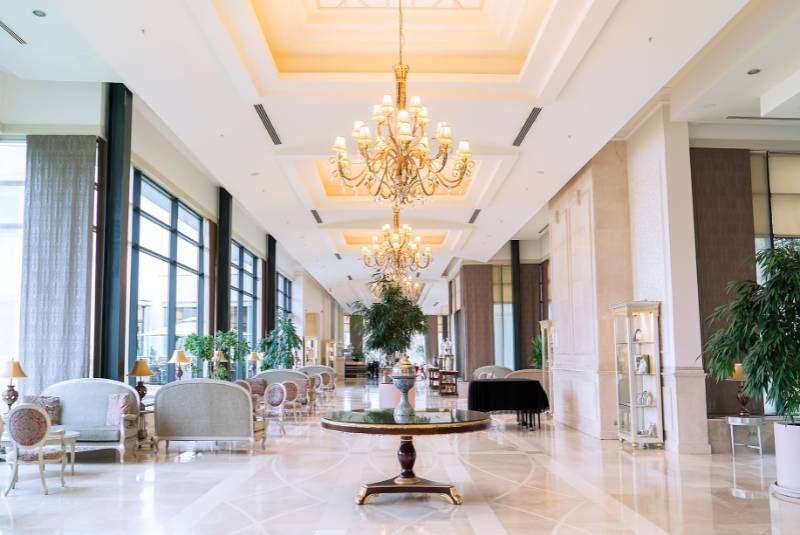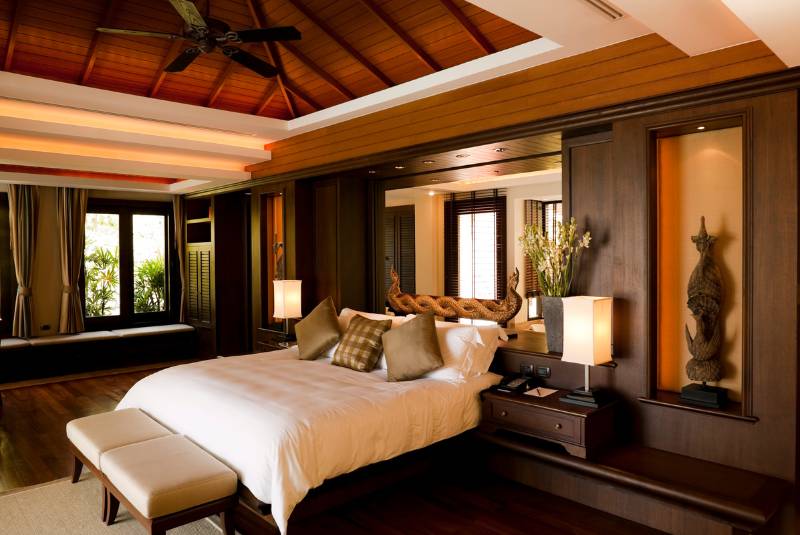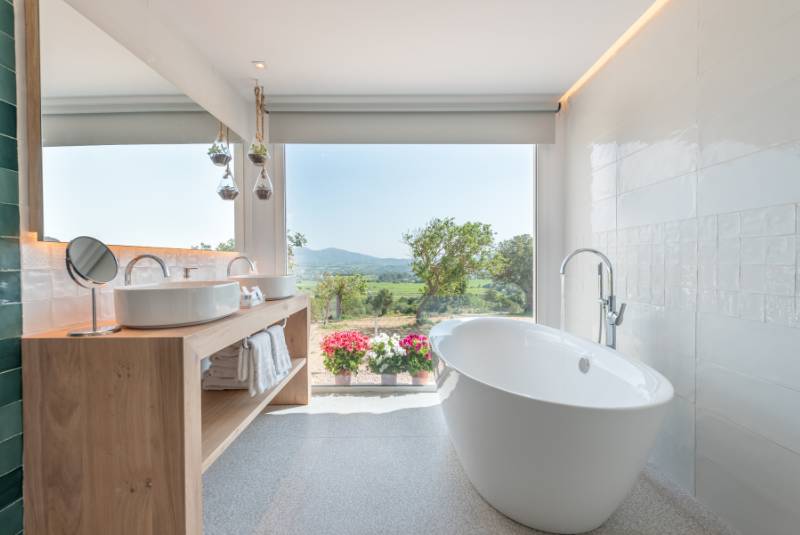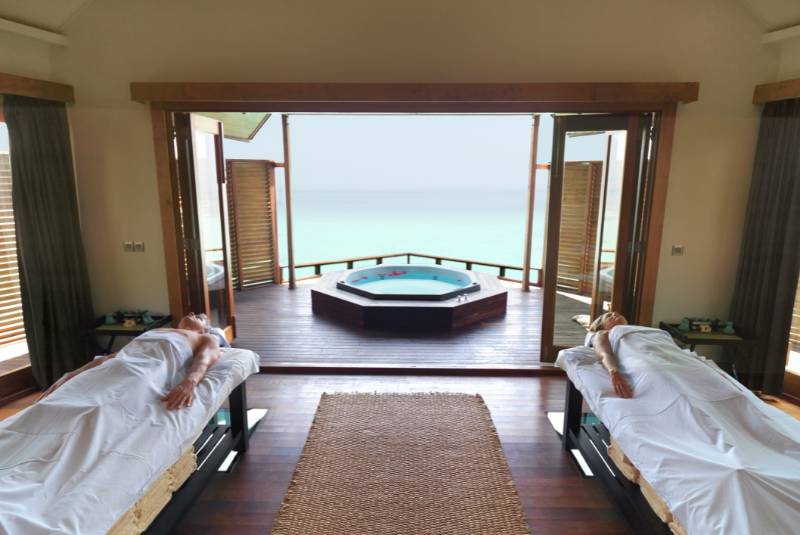Everything happens for a reason in the finest properties on the planet. Ahead of the launch of The World's 50 Best Hotels in September, Anna Kibbey guides you on a journey from hotel lobby to subterranean spa as she explores how luxury hotel designers provide that unexplainable sense of relaxation and happiness
You can’t quite put your finger on it, that feeling, as the stress of flight delays, immigration queues and rush-hour traffic lift like the luggage from your shoulders. You won’t be aware of the pacifying effect of the reception desk’s symmetry, the Gestalt principles behind the pleasing geometric pattern on the walls, or that the activity in your amygdala – the brain’s fear centre – is diminished by the gentle curve of the banquettes. All this, when executed well, will just feel like happiness. Like a delightful accident.
It’s not, of course. In fact, every element of your surroundings, from the crystal chandelier to the towel hook by the shower, has been meticulously calibrated by a team of hotel designers who tap into the psychology behind guest behaviour. “The study of psychology goes hand in hand with the discipline of interior design – it’s profound how the environment affects the way we act, never mind the way we feel,” says Jo Littlefair, co-founder and director of London-based design house Goddard Littlefair.
And their work begins as soon as you enter the building, as you clap eyes on the head-turning centrepiece in the lobby. Whether it’s a Damien Hirst original, a three-storey tropical aquarium or just a run-of-the-mill Baccarat chandelier, it isn’t there just to impress; it has been carefully placed to give you something that makes you feel profoundly at ease: a sense of where you’re going.
The design of hotel lobbies can help guests orientate themselves
“Guests feel comfortable and at home when they have perceived control over their environment,” says Dr Stephani K. Robson, senior lecturer emerita at Cornell University’s School of Hotel Administration. “If you install a feature in the lobby, it becomes a way-finding tool, to avoid using signs to navigate people. You might use other design tools, like a change in the floor finish to carpet, if you want people to sit somewhere. And if it’s done well, guests don’t even know they’re being directed.”
These days, there’s a good chance that your sense of smell might be piqued at an early stage, too. “Scent is deeply connected to memories and can be very powerful,” says Littlefair. “Some hotels offer you a series of cloches at check-in and invite you to smell them and choose a scent for your room.” A signature scent in the lobby (then reprised in candles or toiletries in the rooms) sends signals at a sub-conscious, sensory level that this is somewhere you can relax and that feels familiar, particularly if it has undertones of lavender, jasmine or vanilla – smells that are proven to reduce the stress hormone, cortisol.
At this point, the designers will place the reception desk in an easy line of sight, she says, “drawing guests away from the hubbub into a more cosseted space, and allowing people privacy when they’re checking in”. And though interior design can make sure you’re not sharing your pillow preferences with the whole lobby, it’s a genuine, human welcome that makes guests feel good at check-in.
So rooting interiors in the aesthetics of the local area isn’t just a style preference. Designing with local materials, production methods and craft not only answers the guests’ craving for escapism – just as important as making them feel at home – but also places staff in the natural role of hosts. “When people are working in a place that reflects their culture, they’re generally very proud of it,” says Geraldine Dohogne, head of an eponymous global design studio. “Uniforms, for example, which are part of the whole design, would be made from local fabrics – deep-dyed, for example, if they deep-dye – to create a true environment.”
Local materials create a feeling of escapism
The path to happiness
Now that you’re feeling at ease, it’s time for a little surprise to rouse your excitement and escapism as you’re shown around. “Every time you turn a corner you’ll discover something new, the sense of surprise and discovery," says Dohogne. "You might enter a little garden, then there’s a beautiful staircase, a really magical entrance, a huge corridor, then another little nook, and another.”
Bill Bensley, founder of Bangkok- and Bali-based design studio Bensley, advocates out-there surprises that challenge guests to take home a new accomplishment, like a ride on one of the world’s longest zip-lines, for example. “If a guest can learn something new then they are more likely to remember that hotel when booking again or telling friends,” he explains. “The majority of our guests have never been on a zip-line. The rush puts them in a great mood.”
Leaving the adrenalin fix for tomorrow, you head up to your room, where designers have swapped bold statements for pragmatism and precision. That means getting the basics spot on, says Bensley. “In our rooms, an inviting, fluffy bed in an easily blacked out room with silent AC is paramount.” Bensley also insists on natural light from two or more sides, which recent studies have shown strongly impacts people’s perceived happiness. “This sounds simple," he says, “but 98% of the hotel rooms in the world have light from just one side.”
Then there are the details that make people feel looked after. Good design gets right into the heads of guests to make sure that every touch-point is intuitive, from the controls on the shower to the (artfully concealed) sockets by the bed. “I would walk through and imagine myself living there,” says Dohogne. “When I walk into a bathroom, what would I use? I’m sitting at a desk – is it comfortable? What do I need? I want to get in the shower and I want my towel close – where do we put the bathrobe? We always have an armchair to throw clothes on.”
Small, thoughtful details put people at ease in an unfamiliar space
In the guest’s immediate environment, surprise becomes a particularly powerful tool. It’s the chocolate-on-the-pillow concept: if the guest isn’t expecting something but suddenly it appears, it makes them feel extra special. Designers will make sure there are spaces around the room to display a gift of your favourite fruit with a plate and a knife, or a champagne bucket, or more subtly attentive touches. “Perhaps there’s a little flower, fresh every day, sitting on the window sill, and we’d place it where you would place it at home,” says Dohogne.
Where the magic happens
But you can’t hang around admiring your room all day – there’s an hour or so before dinner and the spa is calling. The question is, HIIT class or hammam? “When we’re designing a spa, we design the journey of each guest,” says Littlefair. “It’s the planning of the spaces that’s really key to decompression. We’ll have an active route for people who might want a workout – quick access, screened-off workout areas, dynamic lighting and music – and a relaxation route for guests who might be arriving to have treatments and drink herbal tea, making sure, for example, the ceiling is side-lit so it’s not in your eyes when you’re moving between treatments. The two can’t cross paths.”
Physical sensation is extremely important in spas, says Littefair, which is why a well-designed spa will lay natural materials like timber, stone and sisal underfoot, to help guests connect with their surroundings. Biophilia, the innate human tendency to seek connections with living things, is the guiding principle not only behind the increase in use of natural materials, but also the decoration of hotel spaces with living walls, statement plants and layered greenery. In short, contact with nature – even indoors – has a positive impact on our health and wellbeing.
Hotel designers create spas with utter relaxation in mind
Now that you’re salted, scrubbed and showered, you’re heading down for dinner, and, as ever, the designers have been working even harder to marry the razor-sharp function and elegant form that keeps guests smiling. “Start with the function,” says Dohogne, “then materials and colours make it beautiful.”
Perhaps you’re shown to a table in the middle of the room, and it makes you feel uncomfortable, so you politely request a transfer to a booth. “Humans feel more comfortable when we have one side protected, up against something like a structural column, a planter or a wall,” says Dr Stephani K. Robson. “We are predatory animals, with our eyes at the front of our heads rather than on the side – our peripheral vision isn’t great so we don’t feel comfortable if our back is exposed. We say ‘it feels cosier’ but it goes back to perceived control – I can’t determine what’s happening behind me.”
But hotels aren’t always trying to maximise your comfort. Sometimes, they need you to be just the right amount of comfortable. For example, they may need to seat the couple who are three Martinis down at the bar. But you’ll be much happier if you’re not asked to leave. The designer’s job is to make both of these things possible, with a naturally diminishing level of comfort that guides guests to move on of their own volition. “So we can make the chair comfortable for an hour and a half, say,” says Dohogne. “If it’s wood, perhaps, and we don’t put in an extra cushion. If there’s no rack for your feet on a bar stool, you probably won’t stay for a second drink.” So when you wake up with a clear head in the morning, you’ve got the designers to thank.
The first list of The World’s 50 Best Hotels will be announced in September 2023. Bookmark theworlds50best.com/hotels and follow the Instagram channel @50Best_Hotels, our Facebook page and Twitter account for all the latest news and results.

